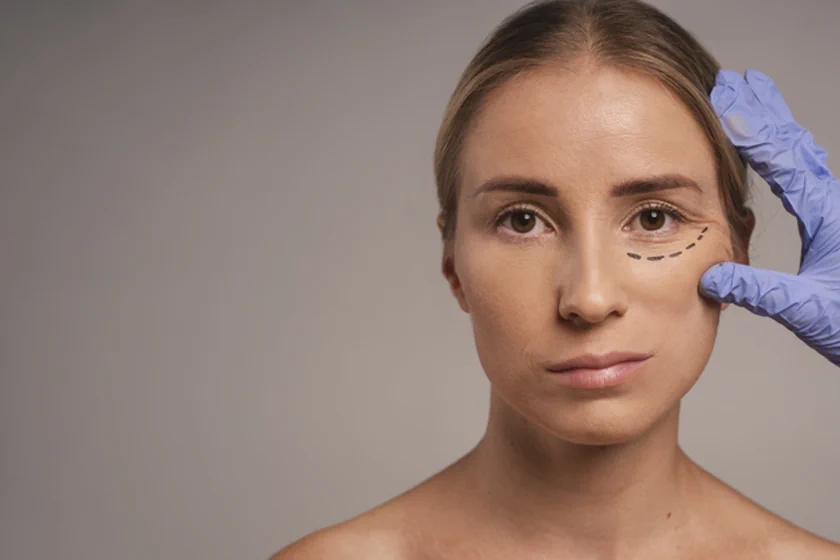|
Getting your Trinity Audio player ready...
|
It is the leading cause of reversible blindness in the world.
It can neither be cured by the prescribed glasses nor with the medications. It continues to be one of the greatest public health challenges, accounting for reduced distance vision. The annual incidence of cataracts in India is about 3.8 million.
Yellow or brown discoloration often occurs as the cataract gets denser.
Reason for the development of cataracts
- Age-related: People more than 60 years of age are at risk of getting cataracts.
- Systemic disease: People with diseases like hypertension, diabetes, and thyroid are more likely to develop a cataract.
- Medication: Due to the prolonged usage of steroids and other prescribed drugs cataracts may develop.
- Substance consumption: Alcohol / Cigarette smoking can lead to early cataracts.
- Trauma: An injury to one’s eye can result in cataracts or even can complete loss of her/his vision.
- Congenital: Few kids have cataracts by birth.
- UV Exposure can negatively affect the eyes and cause cataracts.
Signs and symptoms of cataract
- Cloudy, Blurry, and hazy vision
- Dimmed vision
- Loss of contrast and double vision
- Poor night vision
- Change in glass prescription frequently
- Contact lens not working well
| Types of cataract | Symptom | Treatment |
| Nuclear Cataract | Consistent worsening of vision, Seeing haloes and glares, Double vision at night, Change in colour of pupil | Temporarily can be corrected by prescription glasses Surgery needs to be done at almost grade II |
| Cortical cataract | Aging of the eyes leads to the development of this cataract, The opacity begins from the periphery, There is a gradual blurring of vision, Can’t tolerate brilliant sunlight or bright artificial lighting | Prescription eyeglasses may help make up for some vision loss in the short term, But surgery will eventually be needed to correct this condition |
| Posterior Polar/Sub-Capsular Cataract | Diffraction of light, Trouble in the night driving, Patients having eye trauma may develop this cataract, It compromises one’s reading vision and causes glare and halos | Surgery needs to be done at an early stage owing to very troublesome symptoms, especially in night driving |
| Mature Cataract | The pupil will appear white, Need for brighter light for reading and other activities, Fading and yellowing of color, Double vision in a single eye, Sensitivity to light, Sudden headache | If left untreated, cataracts will eventually cause total blindness |
CATARACT AND DIABETES
When you have diabetes, high blood sugar (blood glucose) levels over time can lead to structural changes in the lens of the eyes that can accelerate the development of cataract (Snowflake Cataract)
Diabetes is a condition in which your body doesn’t make enough insulin or doesn’t use insulin properly. According to the centers for disease control and prevention, about 32.2% percent of adults aged 45 years and over living with diabetes have cataracts.
Blood sugar is the link between diabetes and cataracts. To understand this link, though, it’s important to understand how high blood sugar affects the body.
If left unchecked, high blood sugar slowly damages blood vessels throughout the body. This includes the tiny blood vessels in the eyes. And when diabetes affects these blood vessels, there’s the risk of cataracts and other eye conditions.
Cataracts are the result of high sugar levels in the aqueous humour. When blood sugar rises, the lens swells up, resulting in blurry vision.
Uncontrolled blood sugar also causes enzymes in the lens to convert glucose to a substance called sorbitol. Too much sorbitol in the lens leads to cloudy vision, too.
Risk factors for cataracts in people with diabetes
The main trusted source risk factors for people with diabetes developing cataracts are older age, long duration of diabetes, and decreased metabolic control.
According to the Centres for Disease Control and Prevention (CDC) Trusted Source, 32% of adults aged 45 and over who have diabetes also have cataracts.
People over 65 years with diabetes are twice as at risk to develop cataracts than people of the same age without diabetes. People under 65 years with diabetes are three to four times more likely to develop cataracts than people of the same age who do not have the condition.
Who is more likely to develop diabetes-related eye disease?
Anyone with diabetes can develop diabetic eye disease. Your risk is greater with
- high blood glucose that is not treated
- high blood pressure that is not treated
High blood cholesterol and smoking may also raise your risk for diabetic eye disease.
If you have diabetes and become pregnant, you can develop eye problems very quickly during your pregnancy.
Your chances of developing diabetic eye disease increase the longer you have diabetes.
Choose the right center for that perfect guidance for eye care! Visit Dr. Surbhi Kapadia at Aadicura super speciality hospital today. Complete eye care under one roof! For an appointment contact +918980500015.
Follow our YouTube Channel
![]()








